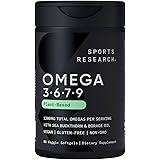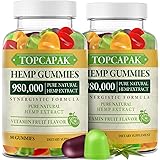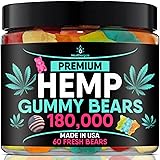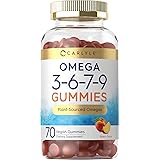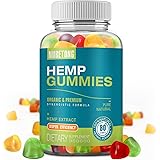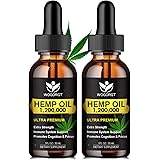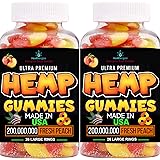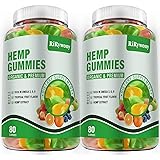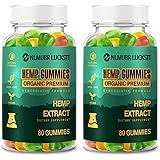The world of wellness is constantly evolving, and few topics have captured as much attention recently as Cannabidiol, widely known as CBD. As highlighted in the accompanying video, CBD has become a significant talking point, with many users and professionals exploring its potential therapeutic applications.
This natural compound, derived from the cannabis plant, is generating considerable interest for its reported benefits across a spectrum of health concerns. From chronic pain and anxiety to sleep disturbances and inflammation, people are increasingly turning to CBD as a potential supportive treatment. Understanding what CBD is, how it interacts with the body, and what to look for in products is crucial for anyone considering its use.
What Exactly is CBD? Unpacking Cannabidiol and its Origins
CBD, or Cannabidiol, represents one of over eighty unique molecular compounds known as phytocannabinoids. These compounds are naturally present in the flower of the cannabis plant. While the term “cannabis” often brings to mind its psychoactive counterpart, THC (tetrahydrocannabinol), CBD is distinct.
THC is famously responsible for the “high” associated with marijuana, acting as a psychoactive ingredient. Conversely, CBD is celebrated as an anti-psychoactive ingredient, meaning it does not induce intoxicating effects. This fundamental difference is key to its widespread acceptance and legal standing.
The cannabis plant family primarily consists of two main types often bred for different outcomes: marijuana and hemp. Marijuana strains are typically rich in THC and cultivated for recreational use. Hemp, however, is naturally low in THC—specifically, containing less than 0.3% THC by dry weight—and higher in other beneficial cannabinoids like CBD and CBG.
Historically, hemp has been a versatile crop, valued for its tough fibers used in everything from textiles to construction materials like hempcrete. Its recent re-emergence into the mainstream is largely due to scientific evidence pointing towards the therapeutic attributes of CBD. This mounting evidence led to the federal legalization of industrial hemp in December 2018 through the Farm Bill.
This landmark legislation legally separated hemp from marijuana, recognizing it as an agricultural commodity. As a result, the CBD market has experienced a boom, with more people than ever exploring how this plant-derived compound can positively impact human health.
The Endocannabinoid System (ECS): CBD’s Crucial Connection
To truly grasp how CBD functions within the human body, one must understand the Endocannabinoid System (ECS). Discovered approximately three decades ago, the ECS is now recognized as one of the most vital physiological systems in human health. It acts as a vast network of receptors found throughout the central nervous system, cardiovascular system, and various organs.
The primary role of the ECS is to maintain homeostasis, which is the body’s natural ability to keep its internal systems balanced. This complex regulatory system influences a wide array of bodily functions, including mood, sleep, appetite, pain sensation, immune response, and inflammation. When external stress or inflammation impacts our internal balance, the ECS kicks into action to restore equilibrium.
Our bodies naturally produce their own endocannabinoids, such as anandamide, which are structurally similar to the phytocannabinoids found in the hemp plant. CBD’s interaction with the ECS is unique; it doesn’t directly bind to the system’s main receptors (CB1 and CB2). Instead, it works by preventing the breakdown of these naturally occurring endocannabinoids. This allows the body’s own calming and balancing compounds to remain active for longer periods.
This indirect mechanism is similar to how certain anti-anxiety medications operate, enhancing the body’s existing resources rather than introducing a foreign substance to block or change functions. When you utilize Cannabidiol, you are essentially supporting your body’s inherent capacity to self-regulate, promoting feelings of calmness, happiness, and relief by allowing the body to produce more of what it likes.
Exploring the Potential Benefits of CBD
The widespread interest in CBD stems from a growing body of anecdotal evidence and early scientific research suggesting a broad spectrum of potential health benefits. Many users report significant improvements in conditions like anxiety, chronic pain, arthritis, and sleep quality.
Targeting Pain and Inflammation
Inflammation is often at the root of many chronic diseases. CBD exhibits powerful anti-inflammatory properties, making it a promising candidate for managing various types of pain. This includes relief from arthritic joint pain, neuropathic pain, and general body aches. Applied topically, CBD has also shown effectiveness in reducing localized inflammation and discomfort.
Alleviating Anxiety and Improving Mood
Anxiety is a prevalent concern driving many individuals to explore CBD. The video touches upon CBD’s fascinating interaction with adenosine, a neurotransmitter that plays a crucial role in regulating energy and drowsiness. Unlike caffeine, which blocks adenosine receptors and can lead to heightened anxiety, CBD is believed to activate these same receptors. This activation may help reduce the physiological effects of anxiety, promoting a sense of calm and well-being.
Supporting Restful Sleep
While not a direct sedative, CBD’s ability to alleviate anxiety and reduce pain can indirectly improve sleep quality. By addressing underlying factors that disrupt sleep, such as discomfort or an overactive mind, CBD can help individuals relax and achieve more restorative rest. This holistic approach makes Cannabidiol a valuable tool for those struggling with sleep disturbances.
Beyond the Basics: Other Promising Areas
Early studies also suggest CBD might play a role in broader health applications. For example, it has already earned a place in overall cancer treatment for its ability to reduce nausea and help manage pain, significantly improving the quality of life for patients. Furthermore, some preliminary research, including a recent study in Canada, has even suggested potential benefits of CBD in helping prevent and recover from certain viral infections, though more extensive investigation is certainly required to confirm these findings.
Navigating the CBD Market: Quality and Safety Considerations
Despite its growing popularity and promising applications, the CBD market remains largely unregulated, posing a challenge for consumers. As the video emphasizes, the potency and overall quality of CBD products can vary dramatically from one brand to another. This means what you’re actually getting in the bottle might not always align with the label or your expectations.
The lack of standardized regulation by bodies like the FDA for most CBD products necessitates due diligence from consumers. It’s crucial to seek out brands that offer transparency, particularly through third-party lab testing. These tests provide Certificates of Analysis (COAs) which detail the product’s cannabinoid profile, confirming the CBD and THC levels. Moreover, a comprehensive COA will also screen for contaminants such as heavy metals, pesticides, and mold, ensuring a clean and safe product.
Another important consideration is the type of CBD product. Full-spectrum CBD contains all the cannabinoids naturally found in the hemp plant, including trace amounts of THC (below 0.3%). This allows for the “entourage effect,” where cannabinoids and terpenes work synergistically. Broad-spectrum CBD contains multiple cannabinoids but no THC, while CBD isolate is pure Cannabidiol. Each type offers different potential benefits and considerations for users, especially regarding drug testing concerns, as even legal trace amounts of THC could potentially lead to a positive result.
On a reassuring note, the World Health Organization (WHO) has stated that pure CBD exhibits no effects indicative of any abuse or dependence potential. They also found no evidence of public health-related problems associated with its use. However, this statement pertains to pure CBD, highlighting why product purity and accurate labeling are paramount for consumer safety and efficacy.
Important Questions and Future Directions for CBD Research
As the scientific community continues to explore Cannabidiol, many questions remain. Two of the most common inquiries from consumers involve the optimal form of CBD to take and the recommended dosage. The answers are complex and often depend on individual needs, the specific condition being addressed, and personal physiology.
CBD products come in various forms, each with different absorption rates and onset times. Tinctures and oils, taken sublingually, offer relatively fast absorption. Capsules and edibles provide a convenient, pre-dosed option, though with a slower onset. Topicals are excellent for localized pain and inflammation, while vapes offer the quickest effects. Understanding these differences helps in choosing the most appropriate delivery method for your lifestyle and health goals.
Determining the correct CBD dosage is often a process of trial and error. Factors such as body weight, metabolism, the severity of the condition, and individual tolerance all play a role. Experts generally advise starting with a low dose and gradually increasing it until the desired effects are achieved. This “start low, go slow” approach minimizes potential side effects and helps pinpoint the most effective personal dosage.
Ongoing research is actively investigating these aspects, alongside exploring CBD’s potential in treating more specific conditions, optimizing its bioavailability, and understanding its long-term effects. The scientific landscape surrounding Cannabidiol is dynamic, with new information and studies emerging constantly. As such, staying informed and consulting with healthcare professionals remains crucial for anyone considering incorporating CBD into their wellness regimen.


